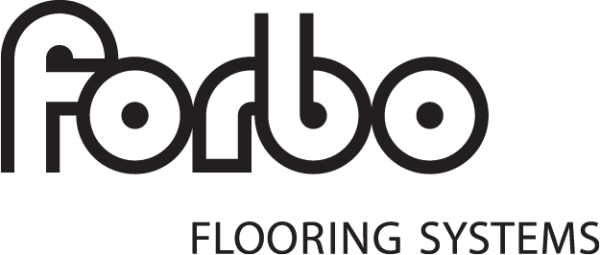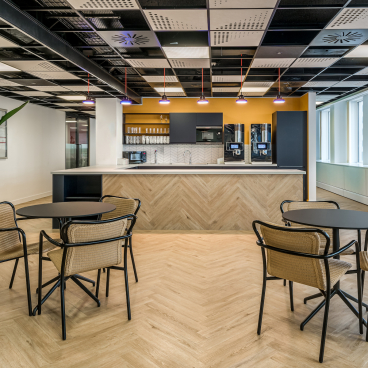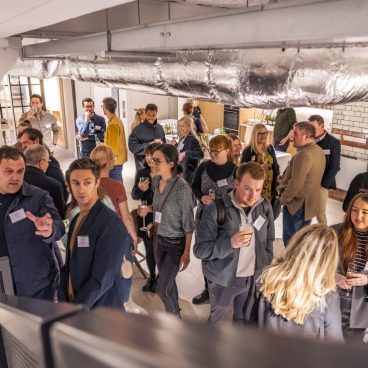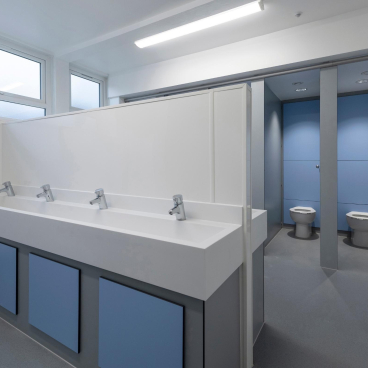Material Source Studio Presents: Designing for Neurodiversity.
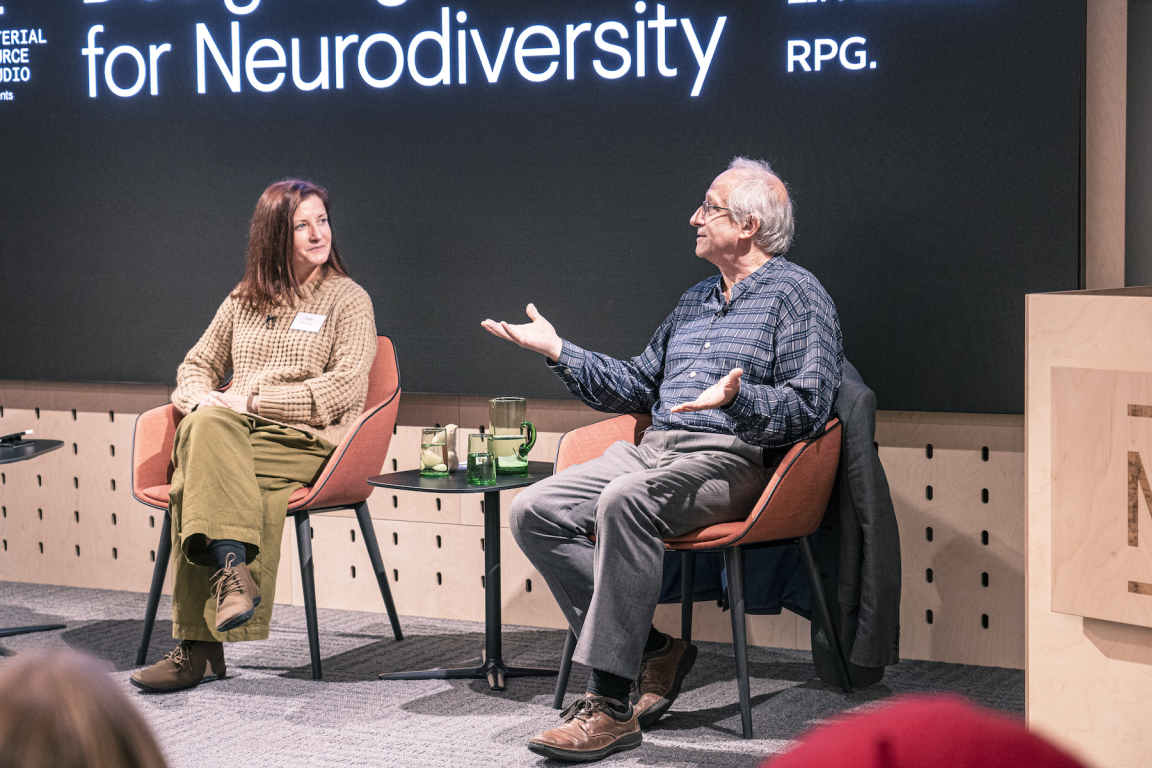
Credit: Tim Ainsworth
Our seventh, and final, Material Source Studio Presents seminar of 2022 was a real corker of a session. Our best attended to date, and with a palpable sense of excitement in the air - as David put it an "end of term" feeling - it was a fantastic way to close our events programme for the year.
Discussing the hugely important topic of Designing for Neurodiversity, our two panellists Richard Mazuch, Director of Design Research and Innovation, IBI Group, and Kate Field, Global Head Health, Safety and Well-being, BSI Group, gave a wealth of rich and varied insight through a conversation led by David Smalley, Director, Material Source Studio. To kick start and contextualise the subject, an introductory video from Dr Kai Syng Tan was played, before David asked Richard and Kate the first question: What is neurodiversity?
What is neurodiversity?
"When I was asked this question a couple of months ago, the first thing I did was engage the left hand side of my brain, which is logical, so I could try to understand the question, then I engaged the right side - which is the creative side - to come up with a sketch", answered Richard.
"To create this, both the left and right hand sides of my brain had to dialogue to ask: what does our neural landscape look like? We all think in different ways. What do I see that you don't? Architects are often ocular centric, so everything we do is about design, pattern and aesthetics. But there are layers on top of this in terms of what I can hear, and feel. And these layers influence our experience of a space.
"We all know there are five cardinal senses. And some of us might know that there are nine. In fact, there are something like 27, and on the last count, 53. And they all have an impact on behaviour. So that is important when trying to understand and develop optimal therapeutic environments - or healthy environments."
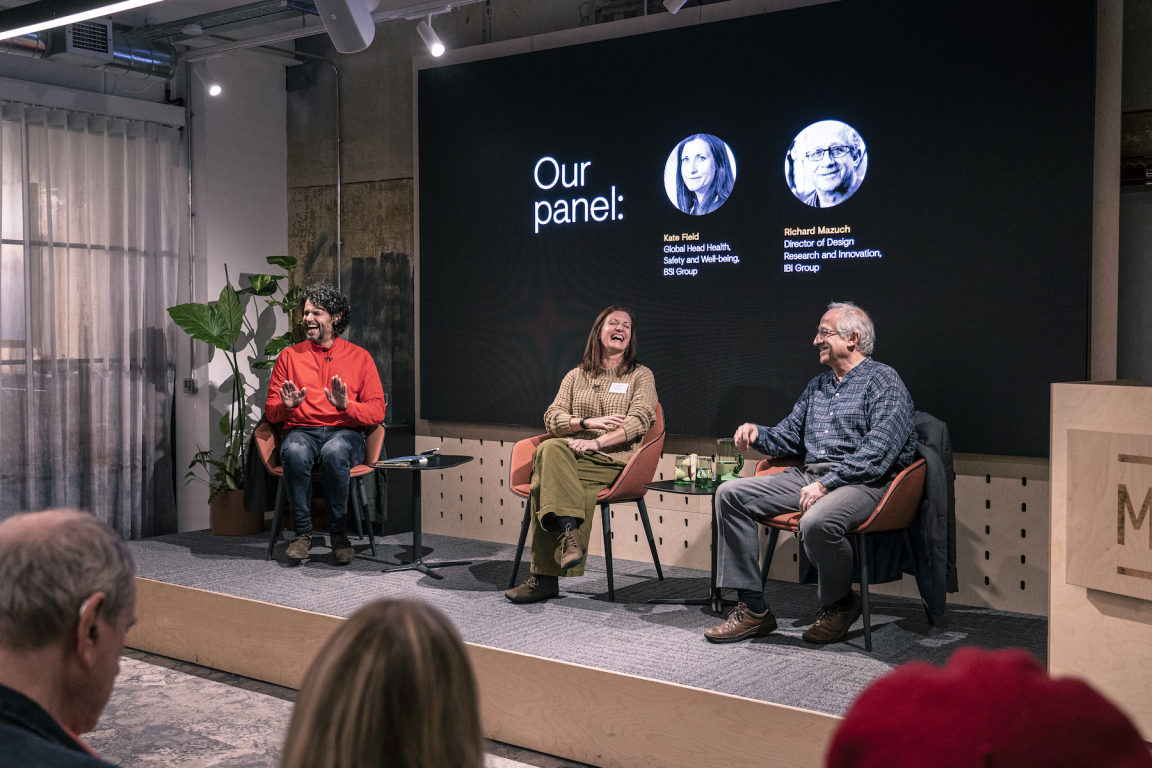
Credit: Tim Ainsworth
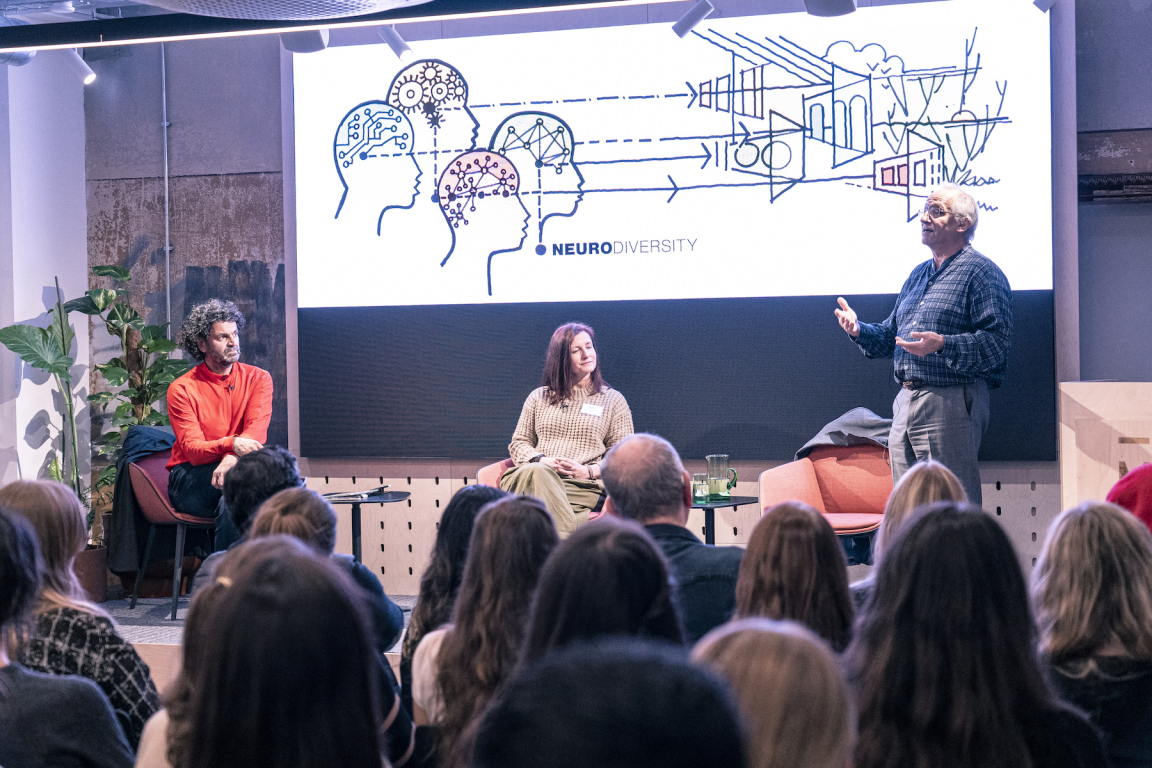
Credit: Tim Ainsworth
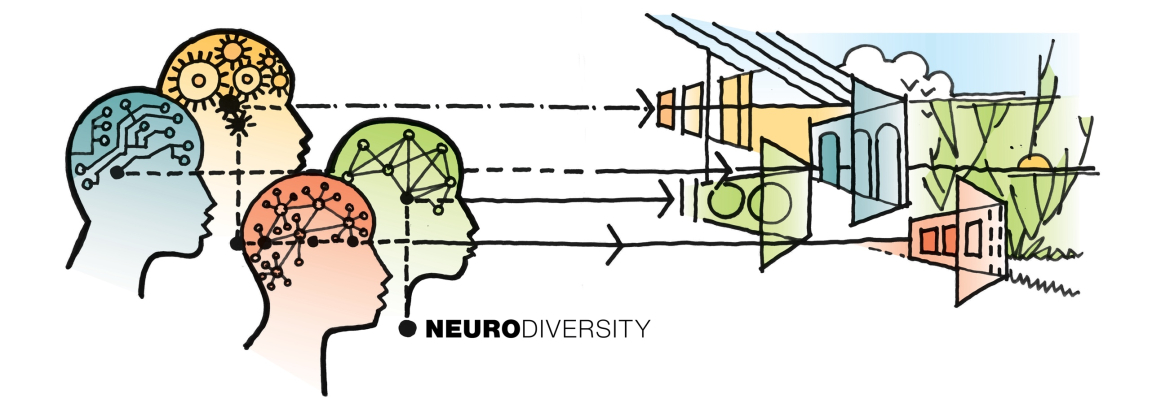
Copyright: Richard Mazuch
While neurodiversity itself is clearly no new thing, David asked: why has there been such a recent explosion in interest over this subject and the broader mental health piece?
"I think awareness was growing before the pandemic in terms of mental health and particularly mental illness with the impact that that had on individuals, on our economy, and on our workplaces", answered Kate. "The momentum was there and particularly in my area looking at the impact of poor mental health created from poor working environments. But then we had to deal with the Covid-19 pandemic and it's just taken that awareness up another level because it was the first time the entire population was facing the same thing together and it broke down an awful lot of barriers.
"We saw our bosses who we'd only ever seen in the office, maybe really stark in a suit and tie and suddenly they're in front of their computer in their rock t shirt with their kids running around in the background and a cat jumping on the table and it broke down all of those barriers. And part of that then enables a wider conversation about mental health and the understanding that we are all neurodiverse. All of our brains work differently. All of those barriers being broken down is giving us a fantastic opportunity to discuss neurodiversity and mental health to understand it more."
We need to break down the barrier of being one or the other. We are all individuals. We all bring something amazing, and that's what we need to champion - Kate
Continuing on this topic, Richard highlighted Leonardo da Vinci as a great inspiration: "The best minds often come from the rich, divergent spectrum we find ourselves on.
"Leonardo da Vinci was divergent in today's terms but we have been gifted with all of his amazing work, made possible by his individual traits and neural pathways."
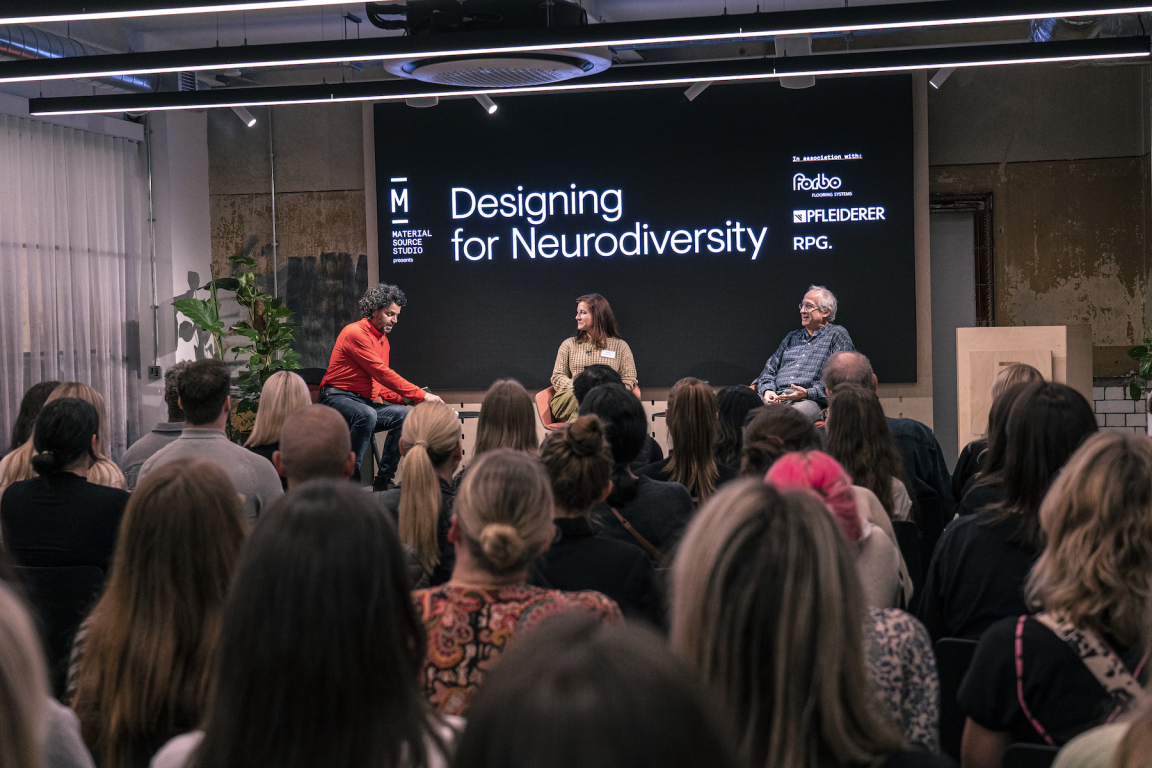
Credit: Tim Ainsworth
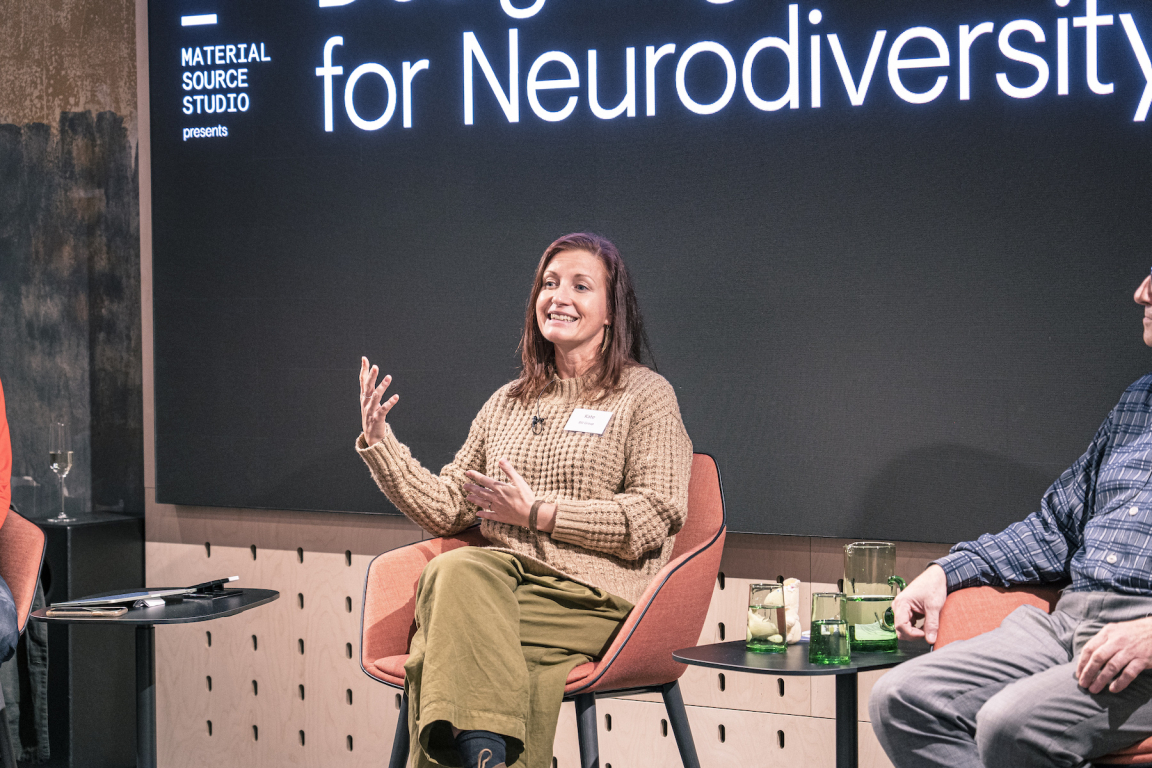
Credit: Tim Ainsworth
How is neurodiversity impacting us?
Neurodiversity provides the differences that make up our rich and varied society. So then, has there been an issue in the way that these subjects have been discussed? From both a medical and social perspective?
"Yes, I think so", replied Kate. "A lot of neurodiversity has been labeled from a medical point of view and therefore is seen as something negative, whereas actually what we're understanding now is that a lot of these things are fantastic and should be embraced. So I think the nature of some of the clinical terminology is where some of the barriers have been. There are always challenges with providing labels because bias is also introduced."
Richard agreed: "It's the labels that do the harm. But once upon a time we thought our brains developed and that was it. And now we know about neuroplasticity, we know our brains can completely change."
A question from the audience asked whether stating that we're all on the spectrum is damaging to those who are perhaps more inconvenienced by their environments than others?
Kate believes the solution is to look at creating inclusive spaces for all. "Interestingly, what works for neurodivergent people will work for the majority of the population from a physical and mental health point of view. So that's including things like natural ventilation, natural light, greenery and avoiding extremes. We also know excess noise can have a negative impact in workspaces. I think it's about understanding the impact the environment has on us and making sure that we are meeting the individuals needs' within it."
And for those who don't meet the needs of the individuals within these spaces? "For every £1 that is spent at the design concept stage, if you then have to make adaptions at the user and occupancy stage, it will cost £10,000. So it's really significant", responds Kate.
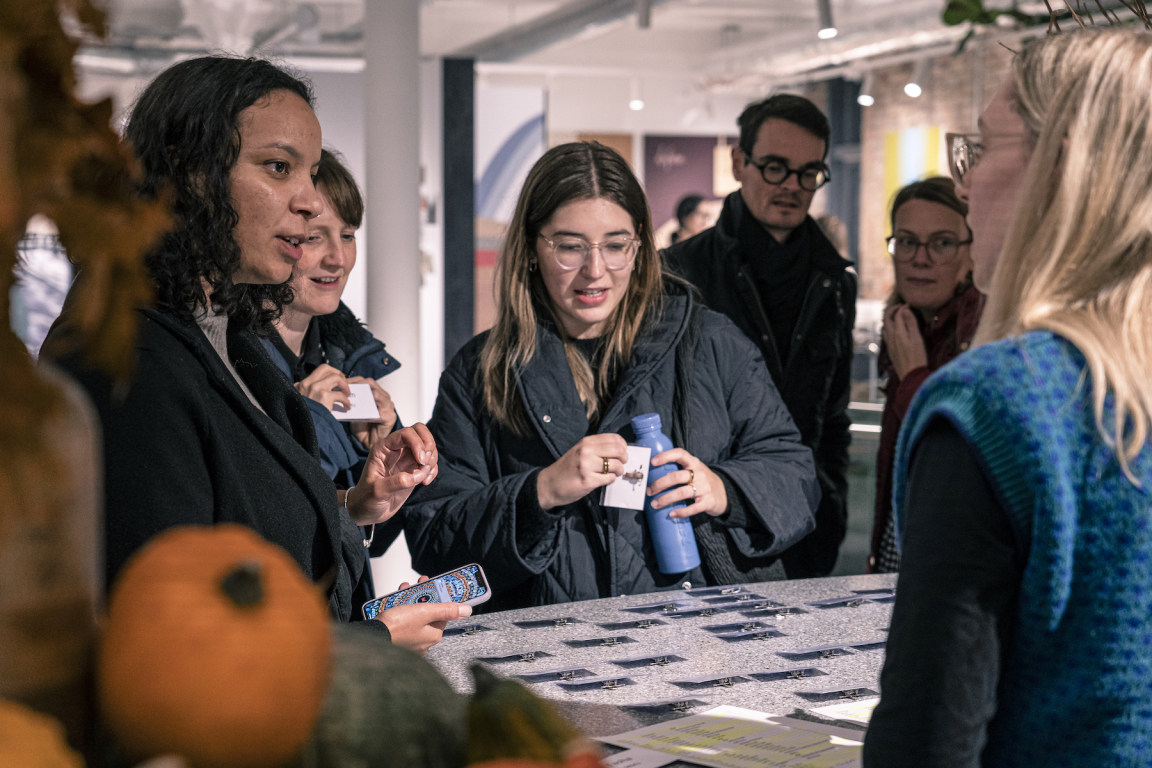
Credit: Tim Ainsworth
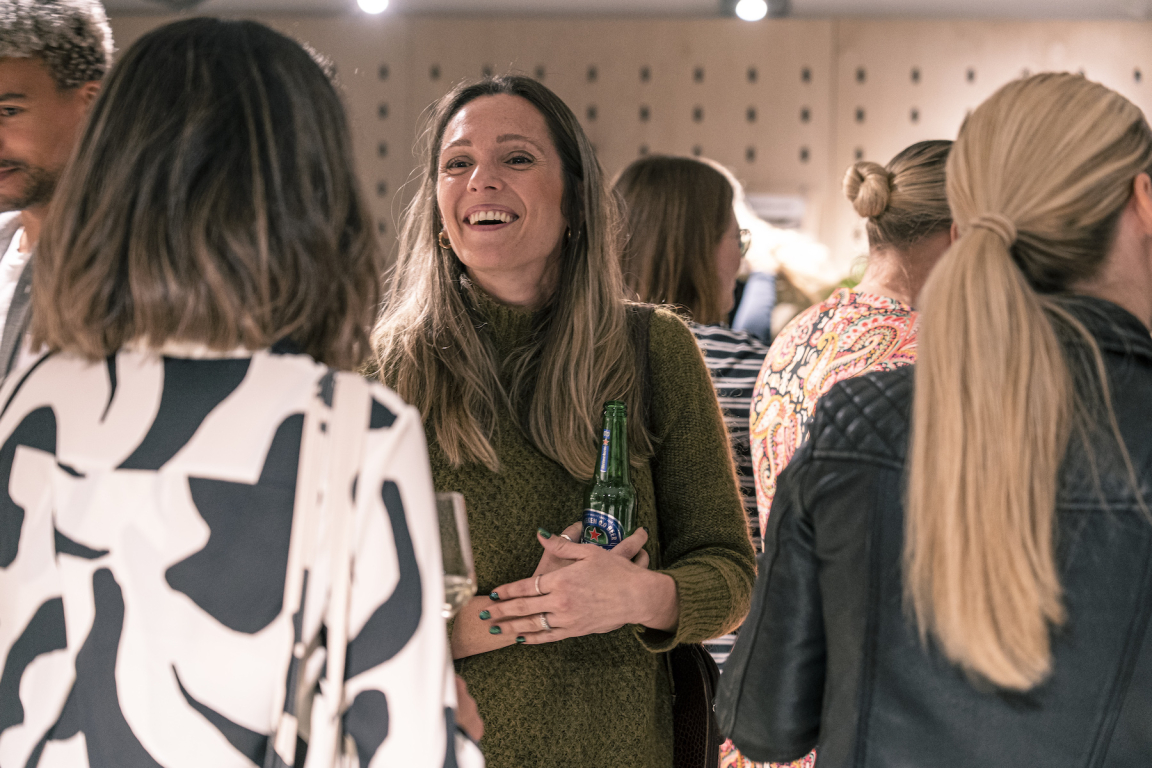
Credit: Tim Ainsworth
Looking ahead
As well as incorporating natural design elements, what other factors might be considered for creating inclusive environments for the future?
"Adaptability and flexibility are key", commented Richard. "In the future, wearable tech might support people in creating their own environments. For example, by changing the colour of local lighting, people can feel the temperature rise or cool by between 4 and 6 degrees. There are all sorts of interventions that we can actually do in terms of choreographing spaces."
Wearable tech is really useful in choreographing environments - Richard
"Similarly, with the metaverse, someone with diabetes type two could potentially enter a shop and see what's good for them and what to avoid. With technology and dialogue we can start to build this type of thing. We talk a lot about flexibility and adaptability, but we really need to deliver it."
Though the engagement from the audience suggested that neurodiversity is front and centre in their minds when working on client projects, some designers argued there is only so far they can go in advising clients. Ultimately, if they're met with an unconvinced CEO, there's not a lot they can do.
Kate commented: "I do believe CEOs are changing, but it's an ongoing challenge. Hopefully, through getting the education and having conversations they are being pushed in the right direction - at the end of the day, designers are the experts. Commercially, the cost of not getting it right is extensive. Workplaces are fundamentally changing - there's a definite desire to bring people in and to create spaces where people want to be."
Richard adds: "Our needs change day to day. If I'm writing an 8,000 word essay I need a different space to if I'm working with other people. Spaces need to be flexible."
Another question from the audience queried that if needs are changing all the time, how do designers encourage their clients to keep investing in updating their spaces?
Kate answered, reassuringly: "Though our knowledge will mature, the fundamentals won't because it's about really focusing on those key sensory areas. The design of a workplace that works best for everyone is one that's consistent. The more natural it is, the better."
A final question from the audience asked whether neurodiversity is just the latest buzzword? "How do we tickbox if it's not in a regulation?"
Richard replied that it must be embedded into design briefs from the start. And Kate agreed it must be viewed as part of a holistic approach. While standards have been lacking up to now, diversity is very much being looked at currently with one new design standard published just last week.
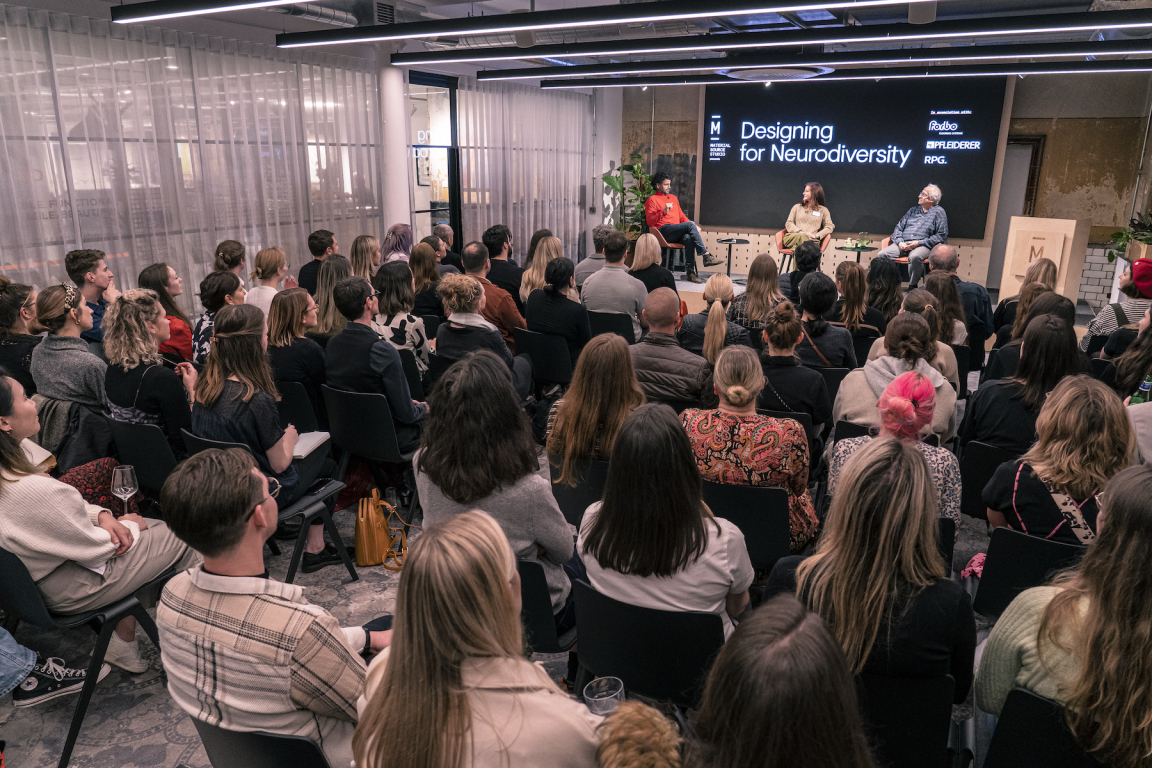
Credit: Tim Ainsworth
To close, each panellist gave one piece of advice to our audience. Richard's was "choreography". And Kate's was "remember the Moomins" - you'll have to follow up with her on that one if you want to know more!
As always, the hour long session was just enough time to scratch the surface, but these discussions will continue across our magazine content, 2023 seminar and roundtable programme, and beyond, so stay tuned.
To conclude:
- Neurodiversity is simply that there is a vast range of minds in the human race that work in different and exciting ways
- Designing for neurodiversity isn’t just about the physical place, it's about structure and cultural change
- Choreography, flexibility and adaptability are key
- Creating environments that are as natural as possible will appeal to the majority of end users
We'd like to take this opportunity to thank our supporters: Forbo Group, Pfleiderer Group, Radii Planet Group. And to also give a huge thanks to you, our north west community, for supporting our seminar and events programme for 2022 by coming along to the sessions, asking thought-provoking questions, and sharing the love online with positive comments and vibrant photographs. You're the inspiration behind all that we do at Material Source Studio, and we can't wait to share more details of all that we have in store in the coming year.


